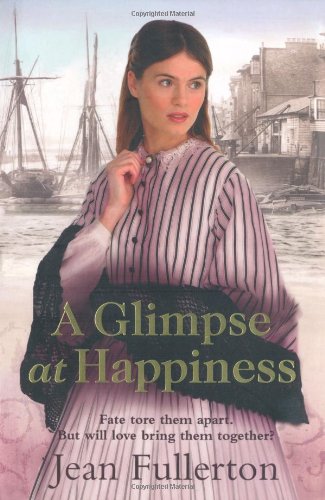A Glimpse at Happiness
Josie O’Casey returns to East End London overjoyed to discover her childhood sweetheart, Patrick Nolan, is alive and well. Her happiness is short-lived. As she settles back into the life she knew as a child, she recalls her poverty-stricken upbringing. But her family’s social standing has vastly improved since her return…
The setting, London’s docklands in 1844, is colourful in dirt and poverty, hard labour, thieving, corner pubs, fights and tarts.
Josie, in her twenties, moves in her new middle-class circles, but sees criminal low life and honest working class too. Emotional intensity, chapter-end hooks and action lead the reader quickly on. Underlying sexual tension and cleverly handled introspection make this is a real page-turner. The author shows a sensitive understanding of the physical effects of intense emotions.
Contemporary detail, skirts that drag in the dirt, the Thames Tunnel, the rag trade, new letter envelopes and the Irish in London, is only skated over. What I missed were the smells and the sounds. No horses whinnied, no dogs barked, no costermongers or labourers shouted except in violent argument. Where were the smells of bodies, the excrement and rotting vegetables? Where is the mention of child labour? School education for the working classes only began in the 1870s.
A feud between Patrick and Ma Tugman’s gang develops when Pat informs on their ongoing theft of goods from the docks. The tales concludes with a courtroom fight and a bloody affray in Ma’s pub that resolves the fate of both the crooks and the lovers.
In the end they come together in all the moral, emotional, rough and filthy docklands of 19th-century London.










